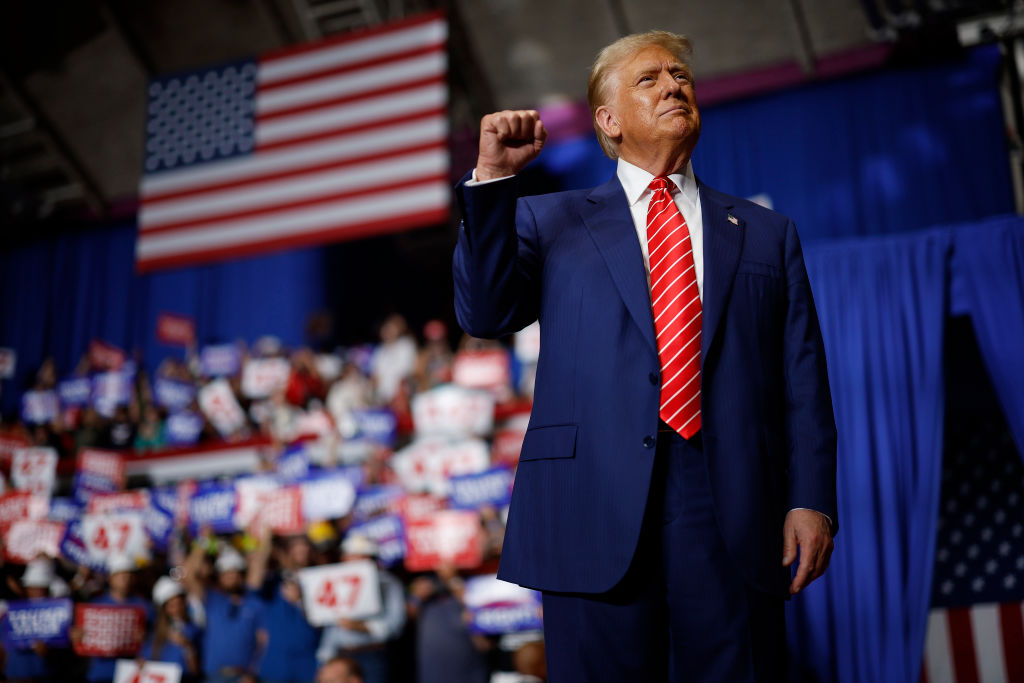
Donald Trump was sworn in as 47th President of the United States on January 20. He is only the second president to serve two non-consecutive terms. The other was Grover Cleveland, who served between 1885 and 1889 and 1893 and 1897.
The president is more than 80% through through his first 100 days back in office – it's been a whirlwind. In the past two months, Trump has issued more than 90 executive orders, the most of any president in their first 100 days going back 40 years.
History will decide how successful this strategy is, especially the orders regarding tariffs, which some economists suggest will hurt the American consumer.
Indeed, the Peterson Institute for International Economics estimates that all income groups will see a decline in after-tax income due to Trump's tariffs, with the country's poorest 20% seeing the largest decline of 4.2%.
The stock market, meanwhile, has turned volatile amid the tariff uncertainty. The S&P 500 is down more than 3% for the year to date on a total return basis (price change plus dividends) through March 21, and briefly entered correction territory.
How can Trump impact stocks?
While U.S. presidents have little direct impact on the stock market over the long term, policies and initiatives can create catalysts for certain sectors and industries.
Take Trump's reversal on cryptocurrency. During his first administration, Trump made clear he was not a fan of digital assets. In July 2019, he posted on what was Twitter and is now X that the value of cryptocurrencies are "highly volatile and based on thin air. Unregulated Crypto Assets can facilitate unlawful behavior, including drug trade and other illegal activity."
But in August 2024, Trump took to X to announce he will unveil a "plan to ensure the United States will be the crypto capital of the planet." And in November, he won the election. Trump then nominated Paul Atkins to lead the Securities and Exchange Commission (SEC), noting in his announcement that the former SEC commissioner "recognizes that digital assets & other innovations are crucial to Making America Greater than Ever Before."
By December, bitcoin broke the $100,000 barrier for the first time as the market perceived a second Trump administration and its initiatives and policies will create tailwinds for cryptocurrency. Price action for bitcoin ETFs reflects this bullishness.
But crypto isn't the only area of the market that could get a lift from Donald Trump's time in the White House. Indeed, here are five stocks to buy for a Trump presidency, representing the insurance, banking, energy, steel, and aerospace and defense industries.
Data is as of March 21.
Berkshire Hathaway

- Market value: $1.13 trillion
- Sector: Financial services
- Industry: Insurance - diversified
- One-year total return: 26.1%
- Three-year total return (annualized): 14.3%
- Five-year total return (annualized): 25.1%
The million-dollar question for American businesses right now is what the Trump administration's tariffs will mean for their businesses.
For example, Berkshire Hathaway (BRK.B) generates significant revenue from property and casualty insurance. A November 2024 Bloomberg article states that implementing tariffs would increase insurance costs.
Bloomberg talked to Bob Passmore, a vice president for the American Property Casualty Insurance Association, who said that roughly 60% of replacement parts for U.S. automobiles come from Mexico, China and Canada. New tariffs will increase the cost of parts, which account for about 40% of the average total repair bills borne by insurers, and would prompt them to eventually increase rates, Bloomberg reported.
This was before Trump implemented 25% import tariffs on both aluminum and steel imports. Both are key ingredients in the making of automobiles and trucks. In addition to repair costs, insurance premiums are based on a vehicle's cost when new. Those will also increase.
That would seem to be a big negative for Berkshire's insurance business. However, a company as large as Berkshire should be able to rearrange its business to secure American-made parts to reduce the damage caused by these tariffs.
In addition, its diversified revenue streams should help offset any collateral damage from tariffs affecting the auto industry.
As for CEO Warren Buffett's thoughts on tariffs, the billionaire was brutally honest about their impact during Trump's first term.
"Tariffs are a tax on consumers," Buffett explained in 2018 and 2019. "They change what people buy and where things are produced. You don't realize what you'd be paying for the clothes you're wearing today if we had a rule that they all had to be made in the United States."
Despite facing some tariff challenges, the biggest reason to invest in Berkshire Hathaway stock is that it has over $334 billion in cash on its balance sheet. Thus, no matter what happens, it is in a much better financial position than most S&P 500 companies.
Tariffs or no tariffs, Berkshire stock is worth owning during Trump's presidency.
Wells Fargo
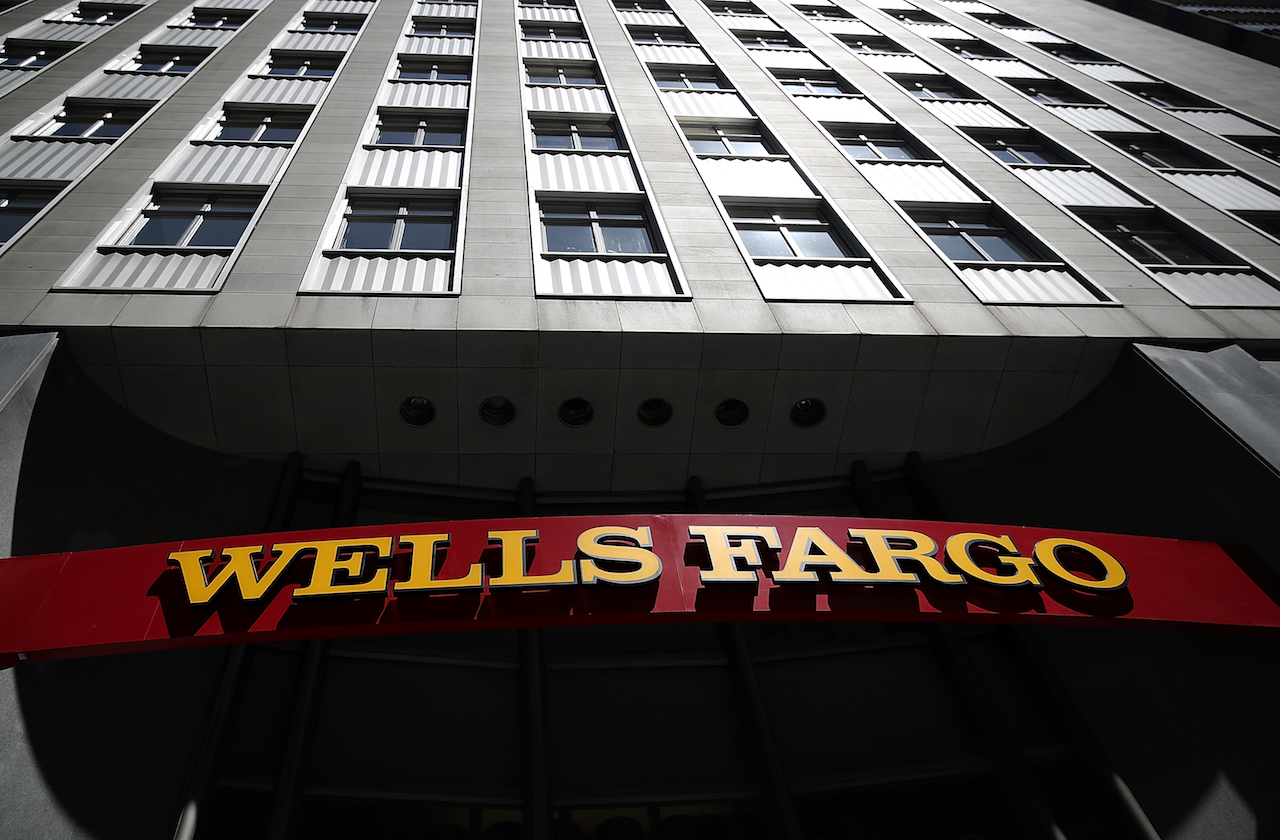
- Market value: $238.5 billion
- Sector: Financial services
- Industry: Banks - diversified
- One-year total return: 28.4%
- Three-year total return (annualized): 15.4%
- Five-year total return (annualized): 25.5%
Wells Fargo (WFC) had total reported assets of $1.92 trillion as of December 31, 2024. That makes it one of America's biggest U.S. banks.
The California-based financial firm is getting closer to clearing itself from regulatory hurdles that caused the Federal Reserve to place a $1.95 trillion asset cap on the bank in 2018. That shut down its ability to grow. The cap is expected to be lifted in the first half of 2025.
Given the Trump administration's desire to reduce regulatory oversight of financial institutions, Wells Fargo's days of no growth will soon be over.
Wells Fargo research analyst Mike Mayo recently weighed in on the implications for banks of a second Trump term.
Mayo said that a Trump presidency "is a regulatory game changer that likely includes more free markets, less harsh oversight (aids capital, costs, fees), and reduces 'regulatory risk.'" He added that it marks a "new era" after more than a decade of tougher regulation.
One area where banks will benefit is mergers and acquisitions, where deals are expected to move more quickly through regulatory approval. With Wells Fargo ready to grow again, Trump's election couldn't have been more opportune.
Analysts are currently bullish on the financial stock. According to S&P Global Market Intelligence, nine of the 23 covering analysts call WFC a Strong Buy, six say it's a Buy and eight have it at Hold. This works out to a consensus Buy recommendation.
ONEOK
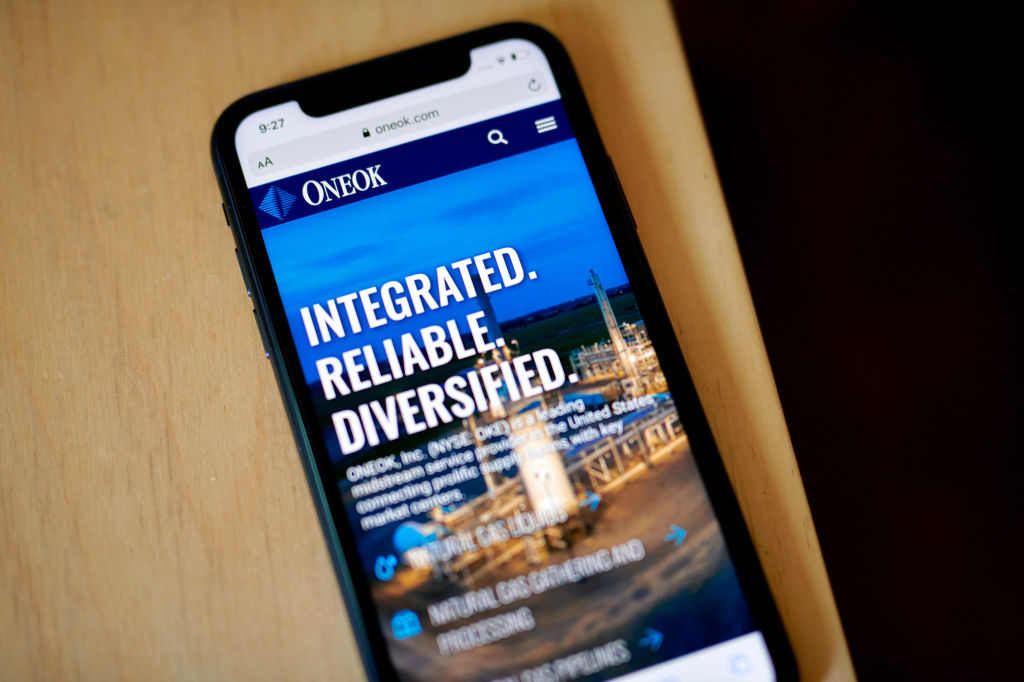
- Market value: $62.0 billion
- Sector: Energy
- Industry: Oil & gas midstream
- One-year total return: 30.8%
- Three-year total return (annualized): 19.5%
- Five-year total return (annualized): 46.8%
ONEOK (OKE) is one of the largest midstream oil and gas companies in the U.S. and is one of four S&P 500 energy stocks involved in storage and transportation.
Ever since Donald Trump spoke the words, "Drill, baby, drill" in July 2024 during the presidential campaign, it became clear that one of the potential winners of such a policy would be oil and gas companies drilling in the United States.
Even if Trump's energy policy is successful, you don't know which companies will benefit most. However, investors know that midstream oil & gas firms should do well because the oil, natural gas, and natural-gas liquids must be stored and transported wherever they are refined into oil- and gas-based products.
In 2024, ONEOK earnings fell 5.7% year over year, but analysts are targeting 7.2% bottom-line growth in 2025. Based on Wall Street's 2025 earnings-per-share estimate of $5.54, OKE is currently trading at 18 times forward earnings – a relatively cheap valuation.
The company has over 50,000 miles of pipeline running from Texas in the south to North Dakota in the north. As frackers produce more oil, ONEOK and its competitors get paid more. So, while you can quibble about which pipeline operator is the best company, a rising tide lifts all boats in a pro-oil and gas business environment.
And OKE has a shareholder-friendly capital allocation strategy that will take 75% to 85% of its free cash flow over the next four years and return it to investors through dividends (3% to 4% annual growth) and stock buybacks ($2 billion). The remaining 15% to 25% will go toward debt repayment, M&A and internal investments.
If you're a dividend investor, ONEOK should be at the top of your list of Trump stocks because of its consistent growth. Since 2000, the annual dividend has increased from 31 cents per share to $4.12 per share, a compound annual growth rate of 10.9%. At this rate, the dividend will double every six to seven years.
Nucor
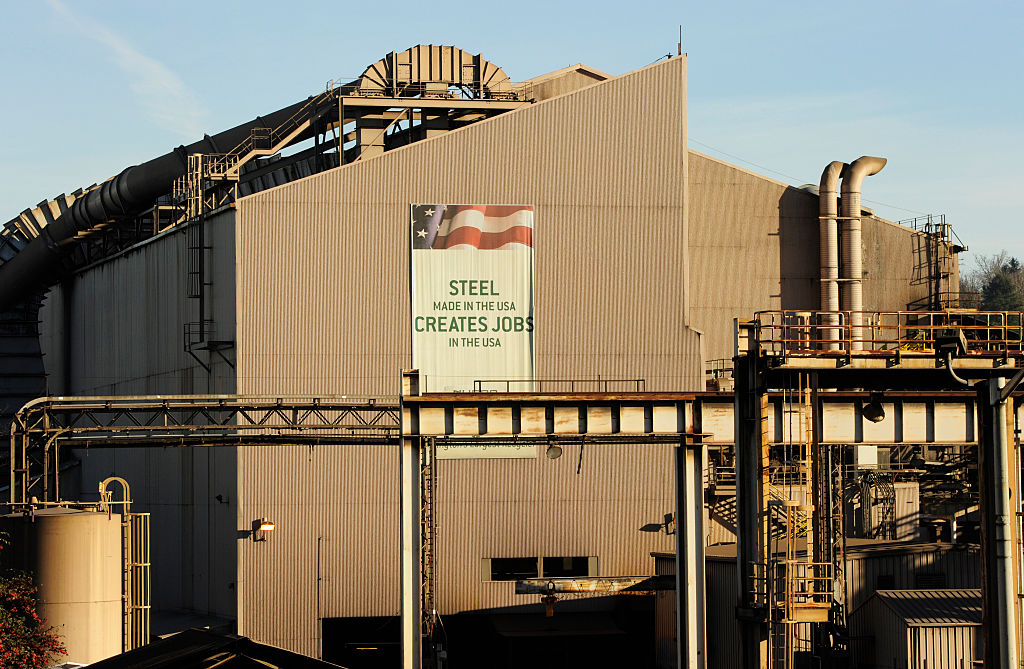
- Market value: $28.1 billion
- Sector: Basic materials
- Industry: Steel
- One-year total return: -37.0%
- Three-year total return (annualized): -3.7%
- Five-year total return (annualized): 34.5%
Nucor (NUE) is outpacing the broader market so far in 2025 after President Trump implemented 25% tariffs on steel and aluminum imports. The new tax will make Canadian steel imports less competitive with American-made steel.
And Wall Street thinks the materials stock has more room to run. The average price target of the 15 covering analysts tracked by S&P Global Market Intelligence is $153.57, representing implied upside of more than 26% to its recent close. Meanwhile, four analysts say NUE is a Strong Buy, five have it at Buy and six say it's a Hold. This works out to a consensus Buy recommendation.
Speaking for the bulls is Argus Research analyst Alexandra Yates, who says NUE's longer-term weakness – shares are down 37% year over year – presents a buying opportunity for investors.
"We view Nucor as a well-run company with a strong track record in its industry," Yates says. "The company is poised to take advantage of megatrends such as the rebuilding of U.S. infrastructure, the transition to alternative energy sources, and manufacturing onshoring."
The analyst concedes the company's financials have been hurt by lower demand and inflationary pressures but adds that "the balance sheet is clean and management has experience navigating difficult conditions."
Huntington Ingalls Industries
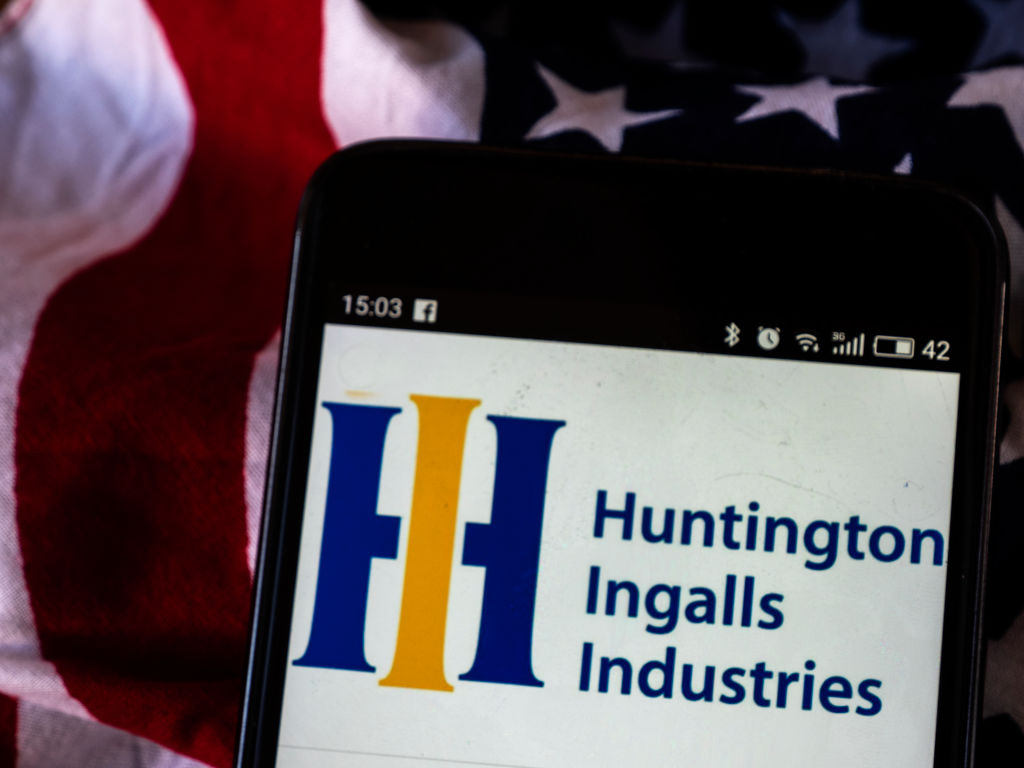
- Market value: $7.9 billion
- Sector: Industrials
- Industry: Aerospace & Defense
- One-year total return: -29.8%
- Three-year total return (annualized): 2.4%
- Five-year total return (annualized): 7.3%
Huntington Ingalls Industries (HII) is the smallest of the five stocks to buy for a Trump presidency. The Virginia-based company is the country's largest military shipbuilder, with 2024 annual revenue of $11.5 billion.
The past five years haven't been good for long-time shareholders who've seen the industrial stock lose nearly a quarter of its value. Even with an attractive 2.7% dividend yield, investors' total return is up just 7% annually over this period.
Further, Trump wants to eliminate problematic spending at the Department of Defense, Huntington Ingalls' largest customer.
"Let's check the military," Trump said on February 9, as reported by the BBC. "We're going to find billions, hundreds of billions of dollars of fraud and abuse, and the people elected me on that."
While worrisome, the company has encountered plenty of obstacles in its nearly 140-year history and it's still standing. As for the share price, HII has generated a 443% total return for investors since it was spun off of Northrop Grumman (NOC) in March 2011, resulting in an average annual return of 14.4%.
What's more, the company has shown a commitment to its shareholder-friendly initiatives. In October, for instance, HII raised its quarterly dividend by 3.8%, marking the 13th straight year it has done so.
You likely won't hit a home run with Huntington Ingalls Industries stock but the fact that its a top dividend growth stock will help mitigate risk in a market prone to big Trump-induced swings.







